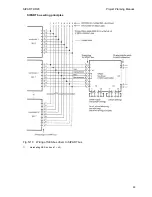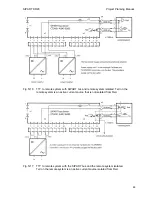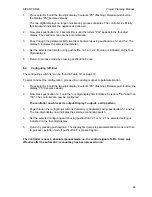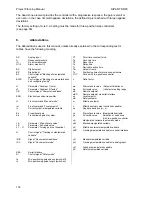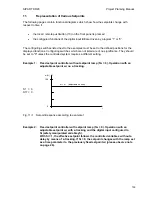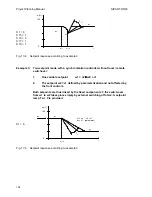
SIPART DR20
Project Planning Manual
•
The response threshold (parameter A) must be set according to the set te and the resulting
∆
y or
∆
x. The condition
∆
x Ks
∗
te
∗
100 %
A
>
-------
or
A
>
---------------------
2
2
∗
Ty
must be satisfied, otherwise the controller will output positioning increments although the
negative deviation has reached the smallest possible value as a result of the finite resolution.
7.2.3
Three-Position Step Controller with External Position Feedback (S2 = 3)
The position control loop is optimized using the parameters te and ta. The same relationships
apply as previously for S2 = 2, except that the dynamics of the position control loop must also be
considered in addition to the processing criteria of the position increments. It is usually necessary
to select te and ta, and thus the resulting response threshold, somewhat larger than with S2 = 2.
7.3
Optimization Guidelines
7.3.1
Adjustment of the control parameters without knowledge of the system response
•
The parameters for optimum control of the system are not yet known. The following factory
settings have been made in order to achieve stable control nevertheless:
-
Proportional gain
Kp = 0.100
-
Reset time
Tn = 9984 s
-
Derivative action time
Tv = OFF
•
Three-position step controller with external feedback (S2 = 3)
-
First optimize the position control loop in manual mode using ta and te. If there are
non-linearities, these must be in the band of greatest slope.
-
Adjust te so that the actuator can process the positioning increments.
-
Decrease ta until the position control loop overshoots as a result of small changes in the
manual manipulated variable.
-
Increase ta again until the position control loop is steady.
•
P controller (S28 = 1)
-
Adjust the desired setpoint and control the negative deviation to zero in manual mode. In
position ”AUTO” of parameter yo, the working point required for a negative deviation of
zero is set automatically in the process.
-
Switch to automatic mode.
-
Slowly increase Kp until the control loop tends to oscillate upon changes in the setpoint.
-
Slightly decrease Kp until the tendency to oscillate is eliminated.
97

